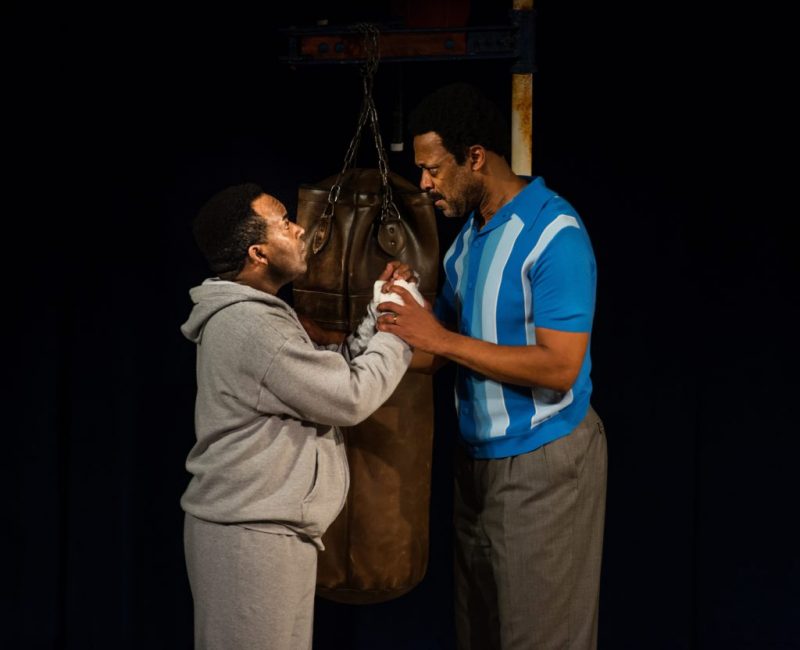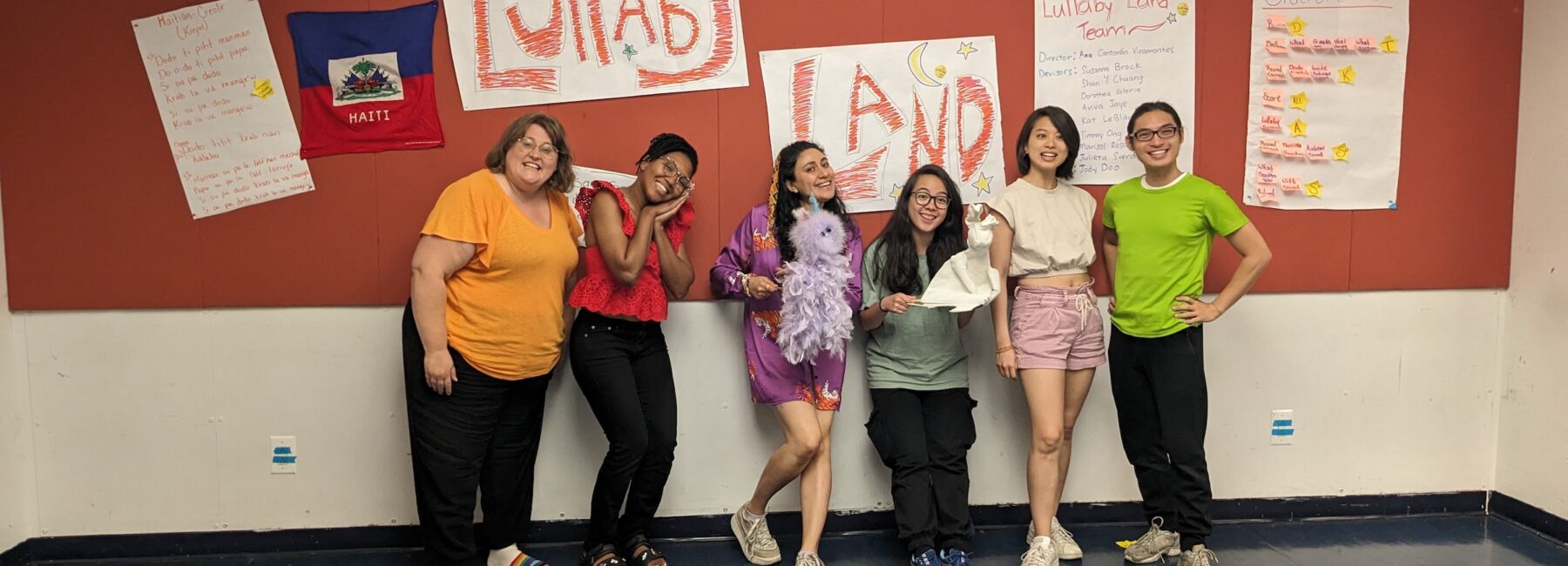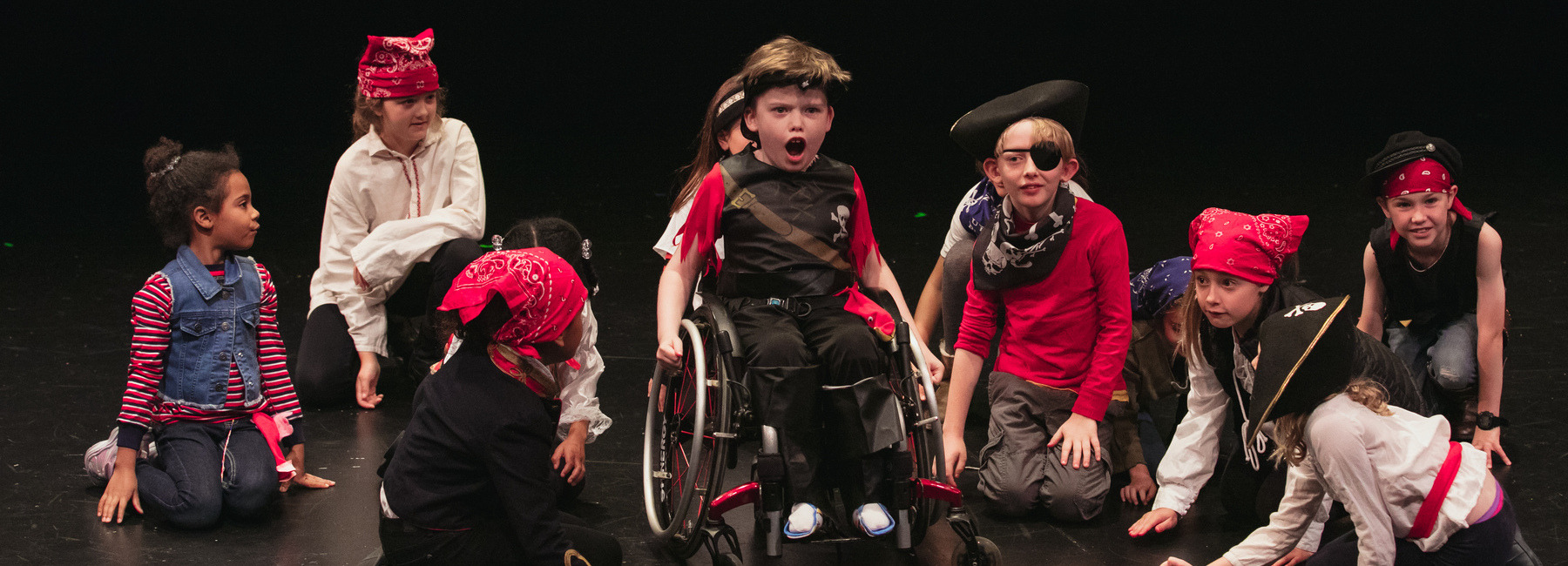During my first week at Seattle Children’s Theatre, I asked my supervisor if they had a juvenile detention center residency. I had just moved from San Antonio, Texas to Seattle to join the Education Department as the Outreach Manager. I was a teaching artist at a few facilities within the Bexar County Juvenile Detention system back in SA, and it was work that I truly loved and wanted to continue. It was a joy to witness how devising theater with justice-involved youth can be a positive influence. The changes happening in the classroom were remarkable. Students were engaged with the devising process. They were creating scenes inspired from their own experiences, working through artistic differences with empathy, and looked forward to presenting their original work to an audience of facility staff, legal counselors, county judges, family, and friends.
I sat across from my supervisor, my inquiry hanging in the air as he looked at me seemingly trying to figure out the best way to break the news. He leaned forward and answered, “We don’t have one, but you can start it.”
I spent the following year cold-calling local organizations that were rumored to have programs within the King County Juvenile Detention Facility (KCJD). Once I received the name of a program administrator at the facility, I spent time working with KCJD staff to craft a residency that was engaging, creative, and a new experience for their youth. What emerged was a plan for a two-hour class geared for young men, that would meet once a week for 12 weeks.

André G. Brown and Brace Evans in SCTs 2018 production of And in this Corner: Cassius Clay
Then a serendipitous moment occurred with the announcement of SCT’s 44th Season. The second show, And in this Corner: Cassius Clay by Idris Goodwin, happened to run simultaneously with our time at KCJD. This powerful piece provided an in-depth look at the boyhood of Muhammad Ali, touching on his athleticism, family life, and connection to the civil rights movement. With the teaching artist as their guide, students would read the script, explore themes, and create responses using any art form they wished. The residency would also have two special events. The first, a session with Mr. Goodwin, who would be in town during the run of the show, where students could ask questions about the writing process. Second, the cast of Cassius Clay would perform a staged reading at the end of the residency, so students could engage, listen, and feel the incredible energy of this production.
So much was learned over the next five months about how to tailor this residency to the needs of the facility. While there is no “one size fits all” program for residencies in juvenile detention centers, there are a few strategies we learned to help aid the process for new theater programs in other centers.
1. Embrace the Blank Slate
Ask any education program manager and they’ll agree—when starting a new program from scratch, you have your work cut out for you. Detention facilities come with their own unique set of structures and mandated practices that visiting programs must work within, which add an extra layer to the planning process. During the initial call with a program coordinator at the facility, lead with questions that unpack detention culture, current programs, and changes happening within the facility. A few good questions to ask are: What current arts programming do you have? What do your residents need? Do you have bandwidth to help shape a new program with our organization? Here’s what we need in terms of space and ideal time, could you accommodate that? After that initial conversation, a structure and time frame will emerge that can inform what kind of topic would best suit the students.
Recognize that you will be starting from scratch with student expectations, too. A common occurrence among the students I’ve met at these facilities is that they have a very physical reaction to the word “theater.” Almost immediately I felt the energy zap out of the room and heard some push back using negative stereotypes about theater. The groups I taught had little to no experience with theatre and it took some wooing to have them try something new. If that happens, bring them in with your most engaging ensemble building game where there are no “outs” and there is a balance of silly and challenging tasks. By the end of the game students may have loosened a bit and ready to hear what the class is about, what the expectations are, and how we celebrate together every step of the way.
2. Flexibility is Key
Like with any classroom, anything can happen. However, you’ll need to consider some detention-specific adjustments. While culture is different at every facility, a few commonalities are population fluidity, canceled classes, and classroom management consistent with what is in place with the facility.
Perhaps the biggest challenge at KCJD was population fluidity. By the sixth week of instruction, SCT’s teaching artist Samip Raval shared that nearly all of the students were gone because their hearings were completed and they were leaving the facility, or they aged-out (on their eighteenth birthdays, residents are transferred to the adult facility), or some of the influencers of the dorm groups had decided not to continue and their friends decided to leave, too. Samip did an excellent job going with the flow as the facility worked with us to build up attendance again, but he and I realized he was essentially starting over with a new group of individuals, on week seven.
When I taught in facilities within Bexar County, the program wasn’t considered optional for a specific group of residents. I had a consistent group of students, with the occasional individual graduating out of the special program and a new one entering the cohort. What I encountered, was students who did not want to participate would break rules before class began in order to be detained. Thinking on your feet is absolutely necessary to keep instruction as consistent as possible and reinforcing that this is team effort when students returned the following week.
Class is like a bubble. Students can leave tensions with other residents behind and focus on the work you are creating together. Sometimes that bubble is popped when those tensions cross over into class time. Before the residency begins, check in with the facility staff to see what their system is for group management. Each facility has their own way to encourage positive behavior and ways to address negative ones. If a staff member intervenes during class to correct a student’s behavior and the teaching artist has a different perspective of how that should be handled during class, it is best to address this privately with the staff member or a facility supervisor. It is a delicate balance to incorporate a facility’s behavioral system when blending it with a teaching artist’s classroom management style, but it can be achieved with open, respectful communication (in the appropriate settings) with staff.
Once classes begin, teaching artists usually check in with security and are escorted to class spaces. Use that time to get a sense of what happened that day and if there is anything you should be aware of or modify instruction for. When students arrive, do a quick check-in (I use a thumbs-up scale) to get a sense of where students are. Many of the students in class are actively experiencing trauma. Always defer to trauma-informed teaching strategies and continue to fold in best practices to meet students where they are. Most days, the thumbs down I saw at check-in moved up a quarter to thumbs middle, or even a thumbs up.
3. Come for the Snacks, Stay for the Theater
Something I offered Samip to try at King County was celebrating at the end of every success in a tangible way. As educators we recognize the not-readily-seen incremental benefits to the work we are asking of the group. While we advanced toward long-term goals we wanted to celebrate and show appreciation for students while in the moment. One of the ways we did this was with snacks. We sought the approval of the facility staff to bring in treats whenever we could. Keep in mind that all outside materials, from paper to costumes, typically need pre-approval and are subject to inspection. Once we had the permission to bring in snacks, we structured classes to include a snack break mid-way or at the end of the day. (The favorite snack of choice? Hot Cheetos for Texas and Washington programs.) Snack breaks allowed for some community building time with the teaching artist, a chance to reset after the first half of class, and an opportunity for students to decompress after their day in a structured environment. Yes, there were a few students who would only attend for snacks, but as long as they were respectful during instruction, they could stay in class and many of them ended up participating.
4. Nurture Authentic Relationships
Given the nature of the work and support needed, teaching artists and administrators will communicate with facility staff often. To help foster the relationship between the two, communication and community are so essential. We invited KCJD staff to events for Cassius Clay, invited them to the theater for meetings and tours, and talked almost every week. Over the course of a year, a solid foundation was formed which allowed for open discussions about program support. The KCJD staff shared that they wanted our teaching artists to meet with shift staff and the supervisor team. This way, SCT became further acquainted with the on-the-ground personnel that support residents and help open new lines of communication.
Programs for marginalized youth are at risk of tokenization. One of the most important steps for a residency inside detention centers to do is to educate all staff involved on how to speak about the program to others in the community. With this specialized program in its infancy, we did not know what the lasting impact would be on students. I asked the entire staff at SCT to join me in protecting the students as well as this program. We committed ourselves to mindful and respectful practices when speaking about the work and we continually acknowledged the privilege we had as guests in the students’ space and lives. This commitment to check ourselves about how and when we talk about this program allows for deeper conversations within SCT’s staff to learn more about systemic oppression, how it affects the lives of students/audiences we seek to reach, and the institution’s relationship with racial equity, diversity, and inclusion work.
5. Support and Self Care
Self-care needs a two-pronged approach. The first comes from administrative support. In my role as program manager, I offered check-ins to talk through classes or difficult moments, reminded and advocated for teaching artists to self-care, and offered tangible program support to teaching artists (like gathering supplies or making copies ahead of time for them) as much as possible. The question was always, “What will help make this successful?” and then brainstorming a plan to make that happen. There were some road bumps along the way—budget, time, and an ever-packed schedule to name a few—but we always put forth the best effort to advocate for teaching artists when we could.
The second, is personal care. Every teaching artist has their own means to revitalize after a challenging class or helping a student overcome an obstacle. I can’t stress this enough: don’t skip out on the self-care. Not taking care of yourself could potentially lead to harder challenges or missteps in the classroom. Self-care was once described to me as a bank account. If you have nothing left in the account to withdraw from, you’ll be even more stressed, tired, and unbalanced for the next class. (I wish I could remember who told me this. Thank you!)
6. Reflect and Write it Down
It’s important to write everything down as the planning and instruction unfolds. Record missteps, challenges, and changes. Comment on what worked or didn’t work and why. Track what you wish you would have known that could have been useful. At the end of the run, bring together the teaching artists, facility staff, and program administrators to talk through every step of the process and reflect. This yielded so much information for us and we have been working to implement those changes throughout the upcoming programs we will have in the spring.
From the first day of planning to the last day in class, no two residencies in a juvenile detention center will look the same, but one characteristic is always true: this is a team effort. Stay open to organic, flexible programming structures and center the experience of the students while learning about the culture of the detention center. Everyone involved should be all-in with the objective of providing the best experience for the students. As long as that remains the guiding foundation of the work, the rest will fall into place and provide a meaningful residency experience.



